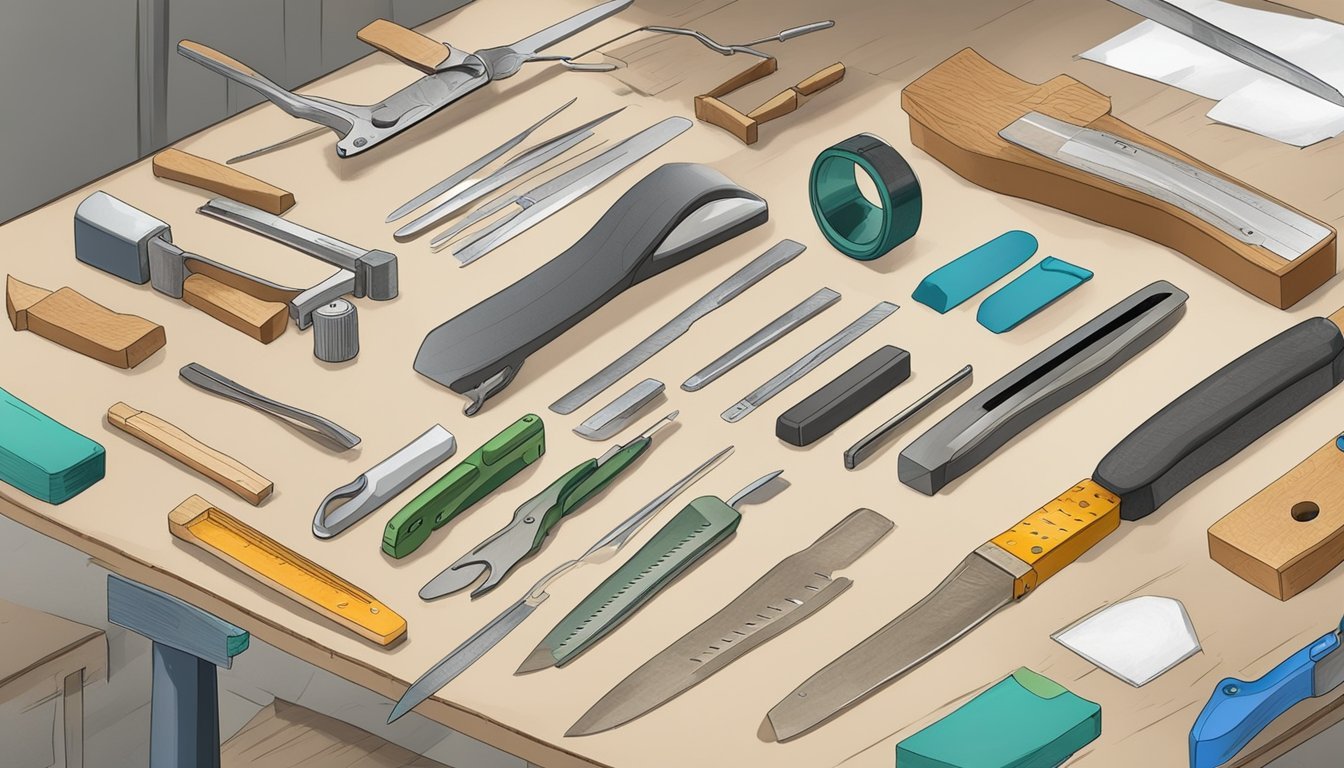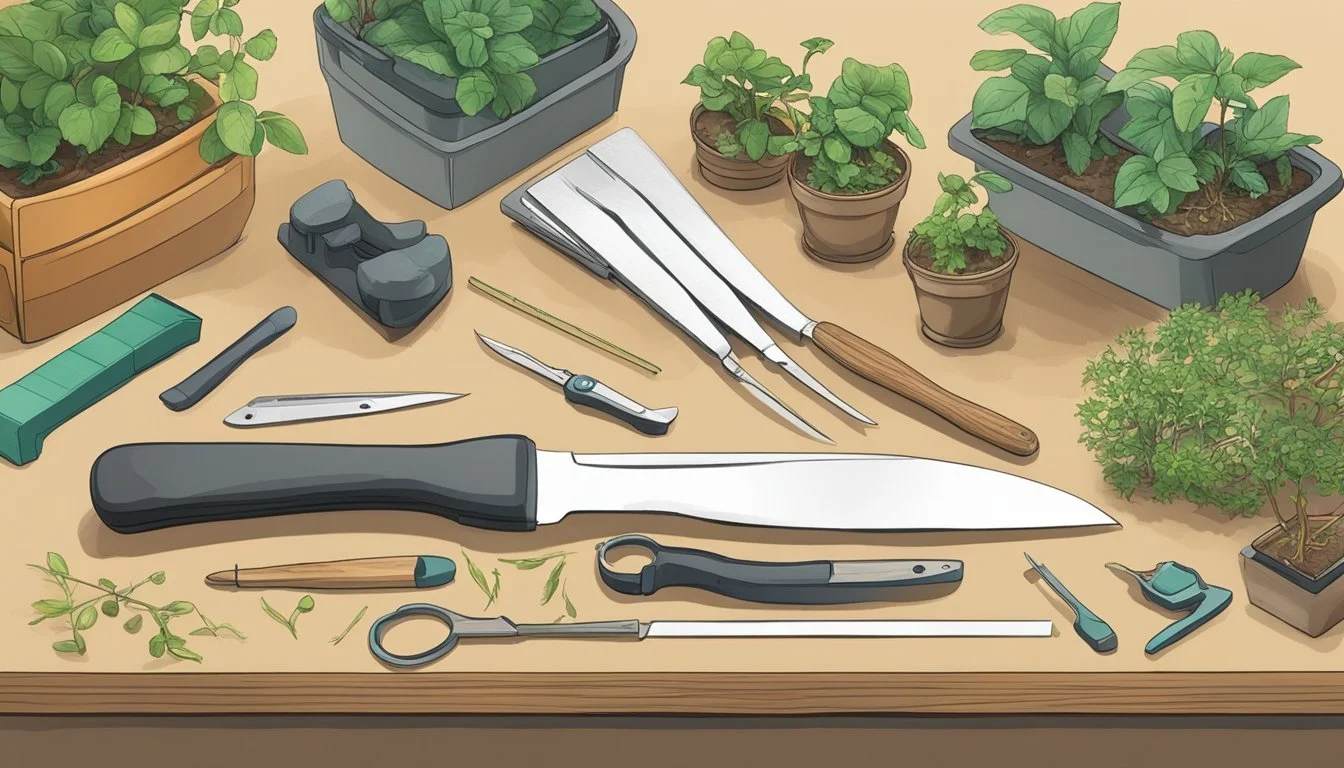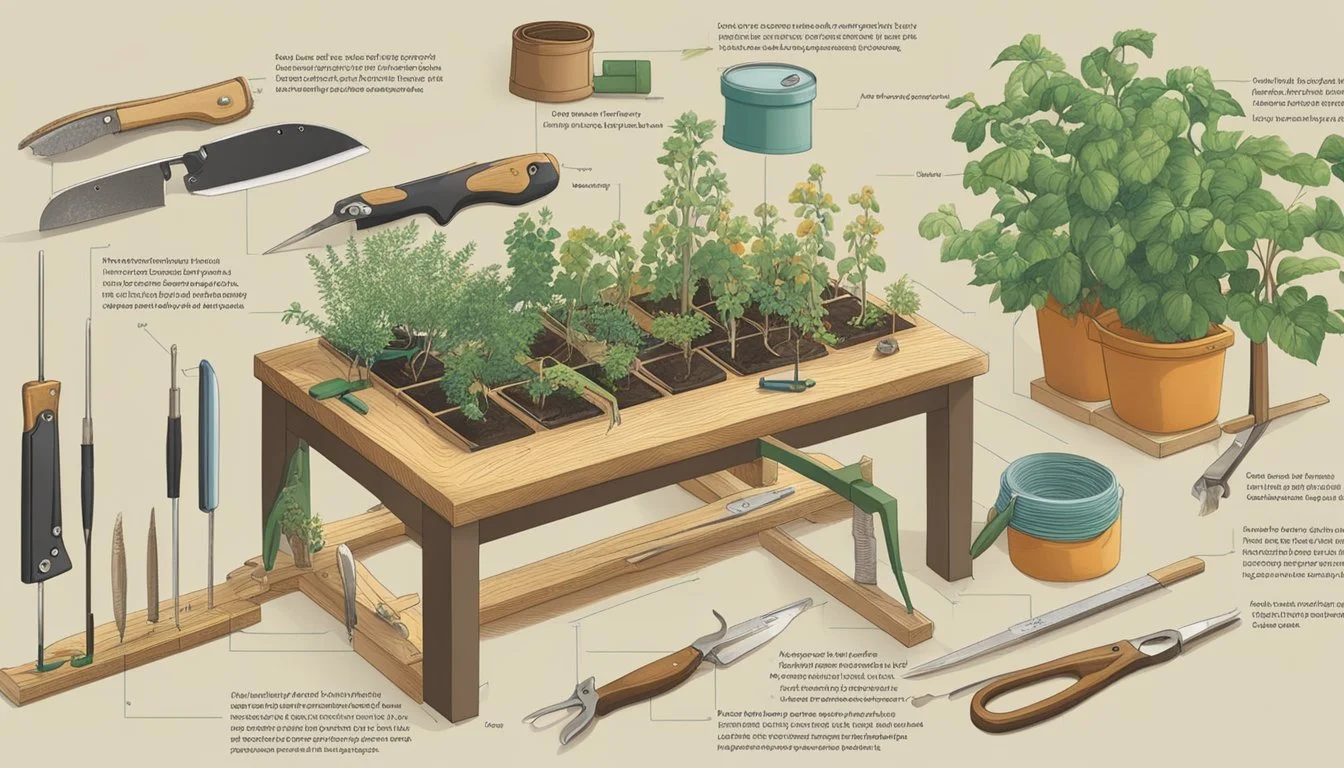The Ultimate Guide to Grafting Tools and Supplies
Essentials for Effective Plant Propagation
Grafting is a horticultural technique that joins parts from two plants so that they grow as a single plant. This method of plant propagation has been practiced for thousands of years, offering a way to merge the best characteristics of one plant with the robust root system of another. Utilizing the right grafting tools and supplies is essential for achieving a high success rate in plant propagation. Whether it is joining a delicate bud to a sturdy rootstock or splicing together sections of plant tissue, the precision and cleanliness of the cut are crucial for a successful graft.
Tools such as grafting knives, pruners, and specialized shears are designed to make clean and precise cuts that are necessary for proper alignment and union of the graft. Equally important are the supplies used to protect and secure the graft joint. These may include grafting tapes, waxes, and compounds that help maintain moisture and enhance the healing process.
Proper understanding and application of grafting techniques can significantly improve the success rate of propagating plants. From hobby gardeners to commercial horticulturists, the choice and use of appropriate tools and supplies are fundamental steps toward achieving desired outcomes. As a result, well-grafted plants are more likely to thrive, bearing the intended fruit, flowers, or foliage with vigor that would be difficult to attain through simple cutting or seed propagation methods.
Understanding Plant Propagation
In horticulture, the success of plant propagation hinges on understanding the biological processes and utilizing the appropriate techniques.
Fundamentals of Propagation
Propagation is the process of creating new plants from a variety of sources: seeds, cuttings, bulbs, and other plant parts. Plants and trees replicate in two primary ways: sexual reproduction, often through seeds which combine genes from two parent plants, and asexual or vegetative propagation, where new plants are cloned from the segments of a parent plant.
Plant Propagation Techniques
Sexual Reproduction: The traditional method of propagation is by seeds, which involves the fusion of gametes resulting in a genetically diverse offspring. The health and vitality of these new plants depend on the quality of the seeds and soil nutrients.
Asexual Reproduction: Techniques like cutting, budding, layering, and grafting enable the growth of new plants that retain the genetic makeup of the parent. Hormones often assist in stimulating root growth and development.
Grafting Basics
Grafting involves the joining of two plant parts: the scion, or the part that will grow into the shoot system, and the rootstock, the rooted part of the graft. Compatibility between the scion and rootstock is crucial to ensure a successful graft union, leading to the desired attributes in fruit trees and roses.
Horticulture and Propagation
Horticulturists use propagation techniques to cultivate new plant varieties, improve plant health, and achieve specific gardening outcomes. They rely on precise knowledge and tools to control the environmental conditions and foster proper root and shoot development.
Plant Species and Varieties
Different techniques are more effective for particular plant species and varieties. For example, fruit trees such as apples and pears are commonly propagated through grafting, while other plants might be best suited for propagation through seeds or layering. Understanding the unique requirements of each species is key to successful plant propagation.
Grafting Tools and Equipment
Selecting the proper tools and equipment is fundamental for effective plant grafting. Precision and skill are maximized with tools that ensure a strong and comfortable grip such as grafting knives and pruners designed for clean cuts and lasting durability.
Essential Grafting Tools
Grafting Knives: A sharp knife is indispensable for precise cuts. Look for a grafting knife with a comfortable grip and durable blade.
Pruners: Required for obtaining scion wood and preparing rootstocks. They must be strong and provide clean cuts to avoid damage.
Supporting Supplies
Grafting Tape: Necessary for holding the graft union securely in place.
Wax and Rubber Bands: Grafting wax can protect the graft area, while rubber bands add necessary tension without damaging the plant.
String: Used as an alternative binding material to support the grafted joint.
Protective Gear
Gloves: To ensure safety and comfort, a pair of durable leather gloves should be used to protect hands during the grafting process.
Tool Maintenance and Care
Maintenance: Regular cleaning and sharpening of tools are critical for both safety and maintaining sharpness.
Durability: Proper care includes storing equipment in a dry environment to prevent rust and extend the life of the tools.
Grafting Techniques
Grafting is a critical skill for those looking to propagate plants, combining different plant parts to achieve a single, healthy organism. Accurate cuts, precise alignment, and proper care are essential for the success of graft unions.
Bud Grafting
Bud grafting, also known as T-budding or chip budding, involves the transplantation of a bud onto the stem of another plant. This technique typically requires the use of a sharp bud grafting knife to ensure a clean incision is made for both the bud and the recipient stem. The bud is then inserted into the incision, and tight binding materials are used to secure the bud in place, promoting successful healing and growth. Bud grafting is often used because of its high success rate and as a means to propagate sought-after traits such as disease resistance.
Advanced Grafting Methods
For the more experienced horticulturist, advanced grafting methods like the wedge graft are utilized to join plants with larger stems. A chisel and a hammer may be used to create a wedge-shaped incision into the rootstock. The scion, shaped to match the wedge, is then inserted into the split stock. The precise alignment is paramount to establish a good vascular connection necessary for the sap to flow, ensuring the graft union's success.
Enhancing Graft Success
Correct environmental conditions and aftercare significantly enhance the graft's success rate. Ensuring the graft union remains moist can prevent desiccation, while protective wraps can reduce the risk of infections and injuries. Additionally, the use of grafting waxes and appropriate binding materials helps maintain a beneficial moisture level and offers an additional layer of protection against the elements.
Troubleshooting Common Grafting Issues
It’s important to address common grafting issues swiftly to ensure propagation success. Mismatches between scion and rootstock often lead to poor sap flow, while improper cuts can result in unsuccessful grafting. Monitoring grafts for signs of disease, poor growth or healing helps in taking corrective actions early. Learning to identify and remedy these problems is crucial for gardeners and professionals alike in the field of plant propagation.
Propagation Supplies and Growing Mediums
Successful plant propagation hinges on utilizing the proper supplies and growing mediums. These elements are vital to ensuring optimal water retention, supporting root growth, and creating an environment conducive to productivity.
Soil and Substrate
The foundation of plant propagation begins with the right soil and substrate. A well-balanced mixture often includes peat moss, perlite, and vermiculite. These components work together to provide excellent aeration and moisture retention.
Peat Moss: Retains water effectively and can slightly lower the pH balance of the soil, making it suitable for acid-loving plants.
Perlite: A volcanic glass that improves aeration and drainage, helping prevent soil compaction.
Vermiculite: Facilitates moisture retention and ensures nutrients are available for root absorption.
Climate Control
Maintaining an optimal growing environment is paramount.
Grow Lights: They provide the necessary spectrum of light when natural sunlight is insufficient, playing a critical role in photosynthesis and plant development.
Heat Mat: Modular warmth from a heat mat aids germination and stimulates root development, making it a valuable addition for many propagators.
Root Development Aids
Tools and substances that promote healthy root formation are essential.
Rooting Hormones: They encourage root growth at the cutting stage, increasing the likelihood of successful propagation.
Water: It's crucial for nutrient transport and root development. Proper irrigation techniques must be practiced to ensure the right balance of moisture.
By selecting the appropriate utilities and mediums for propagation, one can maximize the chances of cultivating healthy and robust plants.
Plant Care After Grafting
After the grafting process, the attention must shift to nurturing the new plants to ensure their success. This involves specific watering and nutrition strategies, diligent pruning and training, and vigilant pest and disease management to promote health and vigor in the garden.
Watering and Nutrition
Water: The new grafts require consistent moisture. Immediately after grafting, water the plants gently to settle the soil around the roots and provide hydration. Thereafter, maintain a regular watering schedule, keeping the soil evenly moist but not waterlogged to prevent root rot.
Nutrients: New grafts benefit from balanced nutrition to support their growth but should not be over-fertilized, which can harm the delicate union. Use a balanced, slow-release fertilizer with an NPK ratio appropriate for the plant species to supply essential nutrients gradually.
Pruning and Training
Pruning Shears: Employ clean, sharp pruning shears for precision cutting. Pruning the new growth helps to shape the plant and direct its energy to the developing graft.
Shaping and Stimulating Growth: Remove any suckers or unwanted shoots from the rootstock to prevent them from draining resources from the grafted portion. Trim the canopy to balance the plant and stimulate healthy new growth.
Pest and Disease Management
Prevention: Keep a keen eye on the new grafts to identify signs of pests or diseases early. Regularly inspect leaves, stems, and the soil for any abnormalities.
Infections: At the first sign of infection, remove any affected areas with sterilized tools to prevent the spread. Implement appropriate organic or chemical treatments only as necessary, following the label instructions carefully to protect plant health.
Gardeners' Best Practices
Successful plant propagation through grafting requires careful attention to detail and an understanding of plant biology. Gardeners must also equip themselves with the appropriate tools and knowledge to ensure a high success rate.
Skills and Precision
Grafting is a task that demands a gardener's precision and skill. The process involves carefully cutting and joining the scion (the plant part grafted onto the rootstock) with the rootstock to form a strong graft union. These precise cuts significantly impact the success rate of the graft taking hold.
Plant Compatibility
Ensuring compatibility between scion and rootstock is crucial for the success of the graft. The scion and rootstock should be closely related, as this influences the graft's ability to heal and grow together. Compatibility affects not only the strength of the graft union but also the future growth and health of the plant.
Choosing the Right Tools
The right tools can enhance a gardener's effectiveness and comfort. Here’s a brief list of essential tools for gardeners:
Grafting Knives: Essential for making clean cuts, knives should be sharp and fit comfortably in the gardener's hand. It's important to consider ergonomics, especially if the gardener is right-handed or left-handed.
Pruners: Used for preparing the scion wood and rootstock, pruners need to be both sturdy and precise.
Binding Materials: These are used to secure the scion to rootstock and include tape, twine, or rubber bands.
Grafting Wax: Protects the graft union from elements and aids in healing.
High-quality materials like those from reputable brands such as Sandvik may offer enhanced durability and performance.
Frequently Asked Questions
How do I choose between right and left-handed tools? One should opt for tools that complement their dominant hand for better control and precision.
What makes a grafting tool ergonomic? Tools designed with ergonomics in mind reduce strain on the hand and wrist, particularly during repetitive motions.
Gardeners aiming for success in propagating plants through grafting must hone their skills, ensure plant compatibility, choose the right tools, and continually seek knowledge to refine their practices.





